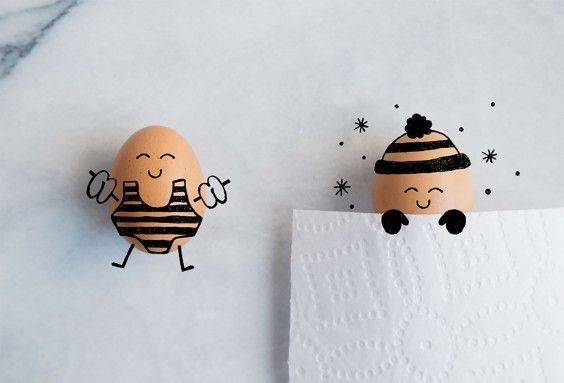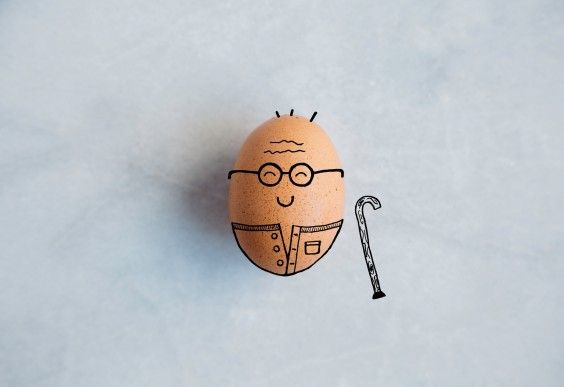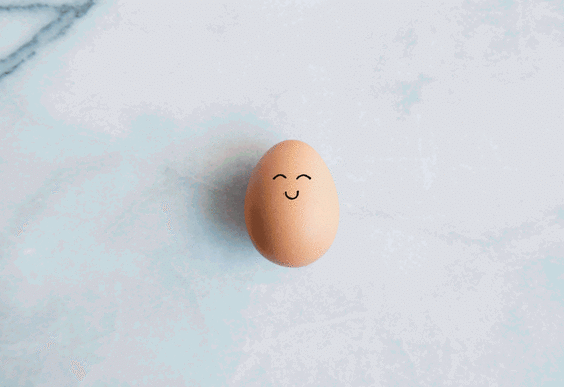Perfecting your timing to guarantee the ideal egg doneness is no joke. The difference between 4 and 6 minutes is basically night and day!
So how can you ensure the best results every time? Well, for starters, there’s this handy timetable, which also includes a freshness test that takes barely any effort at all.
But for those committing to the hard-boiled version, knowing how to get the right texture is only half the battle. You can also bet a year’s worth of your vacation days that your perfectly cooked hard-boiled egg is going to be annoying to peel.
I know this because I eat a hard-boiled egg for breakfast every single day. And after wasting countless hours of my life painstakingly picking bits of shell off brutalized eggs in a silent rage, I decided it was time to solve this problem once and for all. Here’s what I learned.
If you’ve ever tried to solve the unpeelable-egg problem, you probably already know that the internet is chockablock with potential solutions. Except they don’t all actually work. And some of them are downright ridiculous.
To achieve a boiled egg that slips happily out of its shell, one of two things needs to happen: You need to either find a way to reduce the stickiness of the egg white (which makes the egg stick to the membrane that lines the shell) or find a way to raise the pH of your egg.
Wha? More on that below.
First, here are the methods that got the job done… and the ones that were a complete waste of my time.
1. Start hot, finish cold
Carefully dropping an egg into a pot of boiling water instead of starting it in cold water is touted as the best route to easy-peel eggs.
That’s because adding eggs directly to hot water helps them cook faster and keeps the egg whites from reaching too high a temperature.
This seems to make it harder for them to stick to the shell, according to Cathy Davies, PhD, a food scientist and consultant in the food industry. Plunging the eggs into an ice-water bath once they’re done stops the cooking quickly, further preventing the sticky situation.
I had always started my eggs in cold water, so this made a big difference. Davies suggested letting my eggs sit in the ice water bath for a full 15 minutes, but I didn’t have time to wait that long. Fortunately, chilling the eggs for just a couple of minutes worked well enough.
The verdict: This wasn’t totally foolproof, but it nixed about 95 percent of my peeling problems. It might’ve been even better if I’d chilled the eggs longer, but in the interest of time, it was a trade-off I was willing to make.
2. Steam them
Steaming is gentler than boiling. Supposedly this also makes it harder for the egg whites to get too hot and become ultra-sticky.
This was the other cooking method Davies recommended, so I had high hopes. Just as I had after boiling, I plunged the cooked eggs into ice water for a few minutes to help them cool down.
The verdict: This worked just as well as dropping eggs into boiling water: I hit a couple of snags, but the shells mostly slid off.
3. Use older eggs
Older eggs have a higher pH than fresher ones, which makes them less sticky. If you’re buying them from the supermarket, you can check the carton to see when the eggs were actually packed.
(Look for the three-digit lot number, which will list a consecutive day of the year. So eggs packed on January 1 would say 001, eggs packed on February 1 would say 032, etc.)
The problem is, there’s no official definition of “old.” My eggs were packed 3 weeks before I brought them home, and they weren’t any easier or harder to peel than other supermarket eggs I’d bought in the past.
But if you buy very fresh eggs from the farmers market (or you keep chickens), it might be worth seeing if letting them sit for at least a few days makes for easier peeling.
The verdict: Not that helpful if you’re buying eggs from the supermarket but could have an impact if you’re buying super-fresh eggs.
4. Boil eggs with baking soda
Baking soda is alkaline, so adding a sprinkle to your cooking water will raise the pH of the water, which, theoretically, will raise the pH of your egg and make it easier to peel.
But for this to actually work, the baking soda would need to pass through the eggshell and come in contact with the egg white before the proteins started to coagulate, Davies said.
So I used a pin to prick tiny holes in the top and bottom of the egg to make sure the baking soda could get inside ASAP.
The verdict: Not very effective. Maybe I needed to use more than just a sprinkle of baking soda? Even if adding more helped, though, I still wouldn’t do this. Pricking holes in the egg was a pain, and the egg had a faint soapy taste.
5. Use the one-hand rolling technique
Gently rolling the cooked egg on a cutting board (or another hard surface) with the palm of your hand makes lots of cracks in the shell, which supposedly helps detach the membrane from the egg white.
So after dropping the egg into boiling water and chilling it in an ice bath, I gave this a try instead of my usual one big crack.
The verdict: Even though the boiling-and-cooling method worked on its own, the initial peel would sometimes still be a little tough. Rolling the egg first made the process even easier.
6. Shake the egg in a glass of water
A few years back, this egg-peeling hack went viral. In the video, a guy puts an egg in a glass, adds a little bit of water, covers the opening of the glass with his hand, and then shakes vigorously for 20 seconds.
The combination of the water and the shaking seems to cause the shell to detach from the membrane in one giant piece. Amazing, right?
The verdict: I tried this in place of gentle rolling, even though I was sort of afraid that the glass might break in my hand.
It didn’t — and the shell really did slip right off. Even so, I didn’t love it: It was kind of loud, and I like quiet in the morning. Plus, who’s to say the glass won’t break next time?
Eggs, especially the whites, are packed with protein. When those proteins are exposed to heat — like when an egg is being cooked — the proteins coagulate, or turn from liquid to solid, Davies says.
Coagulation is a good thing, because it means you get to eat a solid egg instead of a gross, goopy mess. But the process also makes boiled eggs difficult to peel.
“Proteins are very sticky. When the egg white cooks, it can bind to the membrane and the shell,” Davies says. And you end up with a torn, pockmarked egg.
An egg’s pH also plays a role. Egg white proteins that contain more acid (lower pH) are especially sticky, Davies says. Fresher eggs tend to have a lower pH, which is why the eggs from your local farmers market tend to be more stubborn than the ones from the grocery store.
It’s worth nailing this whole peeling thing. You can use hard-boiled eggs for everything from deviled eggs and egg salad to a ton of other interesting recipe options.
And with hard-boiled eggs, you more or less know what you’re gonna get taste-wise (unlike a box of chocolates, where you could get caramel filling or that weird white cream stuff). Eggs might not be super exciting, but they’re steady.
There’s no one foolproof trick to perfectly peel a boiled egg. Instead, it’s a combination of how you cook the egg, how you cool it, and how you crack the shell afterward.
So start your eggs in already-boiling water or steam them, cool them quickly in ice, and roll them gently to make lots of cracks in the shell before peeling. Or, if you’re a daredevil, go ahead and shake them up in a glass.



